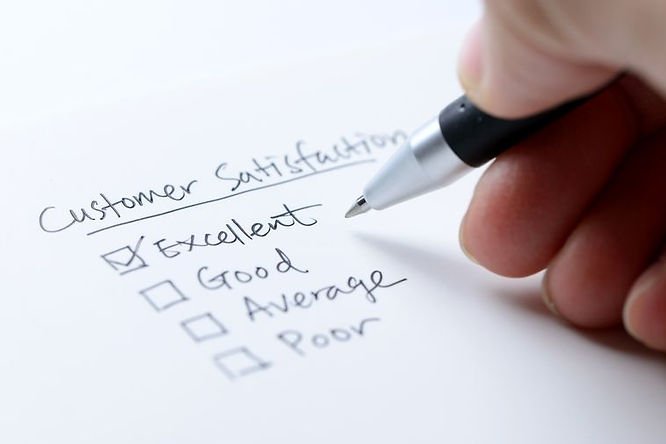In today’s highly competitive e-commerce landscape, understanding your customers’ experiences and needs is paramount to drive success. Creating a well-crafted customer journey map is an invaluable tool for visualizing and optimizing the various stages a customer goes through, from their initial interaction with your brand to becoming loyal advocates. This process helps you identify opportunities to enhance the customer experience, improve satisfaction, and ultimately boost sales and customer retention.
Creating a successful e-commerce customer journey map is an essential step to understanding your customers’ experiences, improving their satisfaction, and ultimately driving sales. A customer journey map is a visual representation of the different stages a customer goes through from the moment they discover your brand until they become a loyal customer.
10 steps to Create a Successful E-commerce Customer Journey Map
- Define your objectives: Start by establishing the goals you aim to achieve with your customer journey map. These could include identifying pain points, improving customer experience, or increasing conversion rates.
- Research your target audience: Understand who your customers are by conducting market research and creating buyer personas. Gather data on demographics, preferences, needs, and behaviors to create a detailed profile of your target customer.
- Identify customer touchpoints: List all the points of interaction between your customers and your e-commerce business. This can include channels like social media, email, website, ads, and customer support.
- Map out customer stages: Break down the customer journey into distinct stages, such as awareness, consideration, purchase, retention, and advocacy. Each stage represents a different part of the customer’s experience with your brand.
- Determine key moments of truth: Identify the most crucial moments when customers make decisions about your brand or products. These moments can significantly impact their overall experience, and understanding them can help you optimize the journey.
- Gather customer feedback and data: Collect data from customer reviews, surveys, social media, and website analytics to understand customer behavior and sentiment at each stage of the journey. This information will help you identify pain points and areas for improvement.
- Visualize the journey: Create a visual representation of the customer journey map, using a template or software tool. Ensure it’s clear, easy to understand, and highlights the key moments of truth.
- Identify opportunities for improvement: Analyze your customer journey map to find areas where you can enhance the customer experience. This could include streamlining the checkout process, improving website navigation, or personalizing marketing efforts.
- Implement changes and measure results: Use the insights gathered from your customer journey map to make improvements to your e-commerce business. Monitor key performance indicators (KPIs) to measure the impact of these changes on customer satisfaction, retention, and sales.
- Continuously update your journey map: As your business evolves and customer preferences change, regularly update your customer journey map to ensure it accurately reflects the current state of your customer experience.
By following these steps, you can create a successful e-commerce customer journey map that helps you understand and optimize the customer experience, leading to increased satisfaction, loyalty, and sales.
Define Your Objectives

Defining the objectives for your customer journey map is a critical first step, as it sets the foundation for the entire mapping process and helps guide your efforts. By setting clear and measurable goals, you can ensure that your customer journey map remains focused and results-oriented. Here are some common objectives to consider when creating your map, along with a more in-depth explanation:
Identifying Pain Points
One of the primary objectives of a customer journey map is to uncover the challenges and frustrations that customers face at various stages of their journey. By understanding these pain points, you can address them proactively and enhance the overall customer experience. Pain points could include long load times, complex navigation, or a lack of product information.
Improving Customer Experience
A well-executed customer journey map helps you gain insights into the customer experience and identify areas where it can be improved. This objective encompasses several aspects, such as enhancing website usability, personalizing marketing efforts, streamlining the purchase process, and improving post-purchase support. A better customer experience leads to increased satisfaction, loyalty, and positive word-of-mouth.
Increasing Conversion Rates
The customer journey map can help you optimize your website and marketing efforts to encourage visitors to complete desired actions, such as signing up for a newsletter, adding a product to their cart, or completing a purchase. Analyzing the customer journey can reveal barriers to conversion and opportunities for improvement, such as simplifying the checkout process or offering more targeted product recommendations.
Boosting Customer Retention And Loyalty
By using the customer journey map to create a more satisfying and seamless experience, you can encourage repeat purchases and foster long-term customer relationships. This objective can involve identifying ways to engage customers post-purchase, offering personalized incentives, or improving customer support.
Enhancing Customer Lifetime Value (CLV)
Improving the overall customer experience and fostering loyalty can lead to an increase in customer lifetime value. By understanding the entire customer journey, you can identify opportunities to upsell, cross-sell, or offer tailored promotions that encourage customers to make additional purchases over time.
Gathering Customer Feedback
A customer journey map can serve as a tool for collecting feedback on your brand, products, and services. By identifying the touchpoints where customers are most likely to provide input, you can develop strategies for actively soliciting and incorporating their opinions into your business.
When defining your objectives, it’s essential to consider your organization’s unique goals and priorities. The objectives you choose should align with your overall business strategy and be measurable to track progress and impact.
Research Your Target Audience

Researching your target audience is essential for creating an accurate and effective customer journey map. By understanding your customers’ demographics, preferences, needs, and behaviors, you can tailor your marketing efforts, website design, and customer support to better serve your audience. Here are some steps to help you research your target audience:
Analyze Existing Customer Data
Look at your current customer base and analyze their purchase history, demographics, and preferences. Use data from your e-commerce platform, CRM, and website analytics to develop a comprehensive understanding of your customers.
Conduct Market Research
Conduct primary research by surveying potential customers, interviewing industry experts, or hosting focus groups. Alternatively, utilize secondary research sources like industry reports, research papers, and government statistics to gather information on your target audience.
Create Buyer Personas
Buyer personas are fictional representations of your ideal customers, based on the data you’ve gathered. Develop multiple personas to represent different segments of your target audience. Include information such as age, gender, location, occupation, income, and family status, as well as their goals, challenges, and pain points.
Identify Customer Needs And Preferences
Determine what problems your target audience faces and how your products or services can solve them. Understand their preferences, such as preferred communication channels, shopping habits, and decision-making factors.
Analyze Customer Behavior
Use website analytics and customer data to identify patterns in browsing and purchasing behavior. Understand how customers discover your brand, the path they take to purchase, and factors that influence their decisions, such as promotions or reviews.
Monitor Social Media And Online Communities
Track conversations on social media platforms, forums, and review sites to gain insights into your target audience’s opinions and preferences. Social listening tools can help you monitor and analyze these conversations more effectively.
Map Out The Customer Journey For Each Persona
With a clear understanding of your target audience, create a customer journey map tailored to each buyer persona. This process will help you identify the unique touchpoints and experiences for each segment of your audience.
Test And Iterate
Continuously test your assumptions about your target audience and update your buyer personas as you learn more. A/B testing, customer feedback, and ongoing market research can help you refine your understanding of your customers and improve your customer journey map.
By conducting thorough research on your target audience and creating detailed buyer personas, you can develop a customer journey map that accurately represents your customers’ experiences, helping you create a more effective and personalized e-commerce experience.
Identify Customer Touchpoints

Customer touchpoints are the various points of interaction between your customers and your e-commerce business. Identifying and understanding these touchpoints is crucial for creating an effective customer journey map, as it allows you to optimize the customer experience at each stage of their journey. Here’s a list of common customer touchpoints in e-commerce:
Social Media
Customers might encounter your brand through organic posts, sponsored ads, or shared content on platforms like Facebook, Instagram, Twitter, Pinterest, or LinkedIn.
Email communications, such as newsletters, promotional offers, cart abandonment reminders, and order confirmations, are essential touchpoints for engaging customers and keeping them informed.
Website
Your e-commerce website is a key touchpoint, including elements like the homepage, product pages, category pages, search functionality, and shopping cart.
Online Advertising
Customers may discover your brand through online ads on search engines like Google, display networks, or affiliate marketing channels.
Organic Search
Customers might find your e-commerce store through search engines when looking for products or information related to your niche.
Customer Reviews And Ratings
Online reviews and ratings on your website, third-party review platforms, or social media can significantly influence potential customers’ decision-making.
Content Marketing
Blog posts, videos, and other types of content marketing can help educate and engage customers while showcasing your brand expertise.
Influencer Marketing
Collaborations with influencers or brand ambassadors can introduce new customers to your brand and help build trust.
Customer Support
Interactions with customer support, whether through live chat, email, phone, or social media, are crucial touchpoints that can greatly impact customer satisfaction.
Post-Purchase Communications
Follow-up emails, requests for reviews, and personalized recommendations can help nurture customer relationships after a purchase.
Packaging And Unboxing
The physical packaging and unboxing experience can leave a lasting impression on customers, impacting their perception of your brand.
Returns And Refunds
The ease and efficiency of your return and refund processes can significantly influence customer satisfaction and future purchasing decisions.
When identifying customer touchpoints, consider both online and offline channels, and take into account the unique aspects of your e-commerce business. By understanding and optimizing these touchpoints, you can create a seamless and enjoyable customer experience that encourages loyalty and drives sales.
Map Out Customer Stages

Mapping out customer stages is an essential step in creating a customer journey map, as it helps you understand and optimize each part of the customer experience with your brand. Breaking down the customer journey into distinct stages allows you to focus on the specific goals, touchpoints, and emotions associated with each phase. Here’s an overview of the common customer stages in e-commerce:
Awareness
This is the stage where potential customers first learn about your brand, products, or services. Touchpoints in this stage include social media, online advertising, content marketing, public relations, organic search, and word of mouth. Goal: Increase brand visibility and attract potential customers.
Consideration
In this stage, customers are actively researching and evaluating their options, comparing your products or services with those of your competitors. Touchpoints include product pages, customer reviews, blog posts, comparison websites, and email marketing. Goal: Provide valuable information, showcase your unique selling points, and address potential objections to help customers make an informed decision.
Purchase
At this stage, customers have decided to buy from your brand and are navigating the checkout process. Touchpoints include the shopping cart, checkout pages, payment gateways, and order confirmation emails. Goal: Streamline the purchase process, offer multiple payment and shipping options, and provide clear communication about order status.
Retention
After the purchase, it’s crucial to nurture the relationship with your customers to encourage repeat business and build loyalty. Touchpoints include post-purchase emails, personalized recommendations, loyalty programs, and customer support interactions. Goal: Enhance customer satisfaction, offer exceptional support, and incentivize repeat purchases.
Advocacy
In this stage, satisfied customers become advocates for your brand, sharing their positive experiences with others and recommending your products or services. Touchpoints include customer reviews, social media shares, referrals, and testimonials. Goal: Encourage and facilitate customer advocacy through user-generated content, referral programs, and social sharing.
When mapping out customer stages, consider your unique business context and the specific needs and expectations of your target audience. Tailor your marketing efforts, website design, and customer support strategies to address the challenges and opportunities associated with each stage. This approach will help you create a more effective and personalized customer journey that drives satisfaction, loyalty, and sales.
Determine Key Moments Of Truth

Key moments of truth are critical points in the customer journey when customers form perceptions or make decisions about your brand, products, or services. These moments can have a significant impact on the overall customer experience, and optimizing them can lead to higher satisfaction, conversions, and loyalty. Here are some common key moments of truth in e-commerce, along with suggestions on how to optimize each:
First Impression
The initial interaction a customer has with your brand, whether it’s through your website, social media, or advertising. Make sure your messaging and visuals are consistent and appealing, and effectively communicate your value proposition.
Product Discovery
The moment when a customer finds a product that meets their needs or sparks their interest. Optimize product listings with clear images, detailed descriptions, and accurate pricing to make it easy for customers to find and understand your offerings.
Comparison With Competitors
Customers often compare products and brands before making a purchase decision. Highlight your unique selling points, offer competitive pricing, and showcase positive customer reviews to stand out from the competition.
Trust-Building
Customers need to trust your brand before they commit to a purchase. Build trust through transparent policies, secure payment methods, and social proof like customer testimonials, reviews, and certifications.
The Decision To Purchase
The moment a customer decides to add a product to their cart or proceed with a purchase. Simplify the buying process with a streamlined checkout, guest checkout option, and multiple payment and shipping methods.
Post-Purchase Experience
The time after a customer has completed a purchase, including receiving the product and any follow-up communications. Ensure timely delivery, provide order tracking, and offer exceptional customer support to address any questions or concerns.
Unboxing And Product Usage
The customer’s experience with the product itself, from unboxing to usage. Offer high-quality products, provide clear instructions, and create engaging packaging to enhance the experience.
Post-Purchase Support
The customer’s experience with your brand after using the product, including any returns, refunds, or support inquiries. Provide easy-to-access support channels, offer a hassle-free return policy, and ensure quick resolution of any issues.
Repeat Purchases
Encouraging customers to make additional purchases or become loyal to your brand. Utilize personalized recommendations, loyalty programs, and targeted promotions to incentivize repeat business.
Customer Advocacy
Turning satisfied customers into brand advocates who recommend your products or services to others. Encourage customers to share their experiences through reviews, testimonials, and social media.
By identifying and optimizing these key moments of truth, you can enhance the customer journey and create positive experiences that lead to higher satisfaction, increased loyalty, and better overall business performance.
Gather Customer Feedback And Data

Gathering customer feedback and data is crucial for refining your customer journey map and making informed decisions to improve the customer experience. By collecting and analyzing data from various sources, you can gain valuable insights into customer behavior, preferences, and sentiment at each stage of the journey. Here are some methods to gather customer feedback and data:
Customer Reviews And Ratings
Analyze reviews and ratings on your website, social media, and third-party platforms like Google My Business or Amazon. Look for trends, recurring issues, and praise that can help you identify strengths and weaknesses.
Surveys And Questionnaires
Use tools like Google Forms or SurveyMonkey to create customer surveys or questionnaires. Distribute them through email, social media, or embed them on your website. Ask questions related to specific touchpoints or the overall customer experience.
Social Media Monitoring
Use social listening tools like Hootsuite, Mention, or Sprout Social to monitor and analyze conversations about your brand, products, or industry on social media platforms. Look for trends in customer sentiment, common concerns, and opportunities for improvement.
Website Analytics
Use website analytics tools like Google Analytics to track customer behavior, such as time spent on site, bounce rate, conversion rate, and user flow. This data can help you identify bottlenecks, optimize user experience, and improve website performance.
Customer Interviews And Focus Groups
Conduct one-on-one interviews or host focus groups to gather qualitative feedback directly from your customers. These conversations can provide in-depth insights into customer needs, preferences, and expectations.
Live Chat And Support Interactions
Review transcripts of live chat and support interactions to identify common customer concerns, questions, and issues. Use this information to improve your support processes, address pain points, and enhance the overall customer experience.
Usability Testing
Conduct usability tests with real users to evaluate the user experience on your website or app. Identify areas where customers may struggle or encounter issues, and use this feedback to make improvements.
Net Promoter Score (NPS)
The NPS is a simple survey question that measures customer satisfaction and loyalty by asking customers how likely they are to recommend your brand to others. Analyzing NPS responses can help you gauge overall customer sentiment and identify areas for improvement.
Once you’ve gathered customer feedback and data, analyze the information to identify trends, pain points, and areas of opportunity. Use these insights to refine your customer journey map, prioritize improvements, and enhance the overall customer experience. Continuously gather and incorporate feedback to ensure your customer journey remains up-to-date and adapts to the evolving needs of your audience.
Visualize The Journey

Visualizing the customer journey is an essential step in making it easily understandable and accessible to your team. A well-designed customer journey map can help you communicate your findings, align your team’s efforts, and prioritize improvements. To create a visual representation of the customer journey map, follow these steps:
Choose A Format
Decide on the format that best suits your needs. This could be a simple flowchart, a timeline, a storyboard, or even an infographic. Consider the complexity of your customer journey and the preferences of your team when selecting a format.
Select A Template Or Software Tool
There are various templates and software tools available to help you create a customer journey map. Some popular options include Lucidchart, Miro, Smaply, and UXPressia. Choose a tool that fits your needs and is easy for your team to use.
Define The Stages And Touchpoints
Begin by outlining the key stages of the customer journey (e.g., awareness, consideration, purchase, retention, and advocacy) and the associated touchpoints. Ensure that these are clearly labeled and organized in a logical sequence.
Incorporate Customer Personas
Include your customer personas in the journey map to provide context and help your team empathize with your target audience. You may create separate journey maps for different personas or combine them into a single, comprehensive map.
Highlight Key Moments Of Truth
Indicate the most crucial moments when customers make decisions about your brand or products. These moments should stand out visually to draw attention to their importance and help your team focus on optimizing these critical touchpoints.
Add Customer Feedback And Data
Incorporate relevant customer feedback, data, and insights to provide context and evidence for your journey map. This could include quotes from customer interviews, survey results, or analytics data.
Include Emotions And Pain Points
Visualize the emotions customers experience at each stage of the journey and identify any pain points they encounter. This can help your team empathize with customers and prioritize improvements to enhance the overall customer experience.
Iterate And Refine
Once you’ve created an initial draft of your customer journey map, review it with your team, gather feedback, and make revisions as necessary. Ensure that the final version is clear, easy to understand, and accurately represents your customers’ experiences.
Share And Collaborate
Share the completed customer journey map with your team, stakeholders, and other relevant parties. Use it as a reference tool for discussions, brainstorming sessions, and decision-making processes to align your team’s efforts and improve the customer experience.
By visualizing the customer journey, you can create a clear and accessible representation of your customers’ experiences, helping your team understand their needs and challenges and prioritize improvements that will have the greatest impact on customer satisfaction and loyalty.
Identify Opportunities For Improvement

Once you’ve visualized your customer journey map, the next step is to identify opportunities for improvement. By analyzing the map, you can pinpoint areas where you can enhance the customer experience and address pain points. Here are some common areas of opportunity and ways to address them:
Streamline The Checkout Process
To reduce cart abandonment and improve conversions, ensure your checkout process is quick, easy, and secure. Simplify the steps, offer guest checkout options, and provide multiple payment and shipping methods.
Improve Website Navigation
Enhance the user experience by making it simple for customers to find products, information, and support. Use clear menus, an intuitive site structure, and internal search functionality to guide customers through your website.
Personalize Marketing Efforts
Tailor your marketing campaigns to individual customer needs, preferences, and behaviors. Use data from customer profiles, purchase history, and browsing behavior to create personalized email campaigns, product recommendations, and targeted promotions.
Optimize Product Pages
Provide clear and detailed product information, including high-quality images, videos, descriptions, and specifications. Showcase customer reviews, ratings, and social proof to build trust and credibility.
Enhance Customer Support
Offer exceptional support through multiple channels, including live chat, email, phone, and social media. Ensure your support team is well-trained, empathetic, and responsive to customer needs.
Implement A Loyalty Program
Encourage repeat business and customer loyalty with a well-designed loyalty program that rewards customers for their purchases, referrals, or other valuable actions.
Improve Communication
Keep customers informed and engaged through regular communication, including order confirmations, shipping updates, and post-purchase follow-ups. Use a consistent brand voice and messaging to build familiarity and trust.
Address Pain Points
Identify and resolve any specific pain points customers encounter during their journey, such as slow website load times, difficult return processes, or limited product availability.
Encourage Customer Advocacy
Make it easy for customers to share their positive experiences and recommend your brand to others through referral programs, social sharing buttons, and opportunities to leave reviews or testimonials.
Monitor And Measure Success
Continuously gather feedback, track key performance indicators (KPIs), and analyze your customer journey map to measure the success of your improvements and identify new opportunities for enhancement.
By identifying and addressing these opportunities for improvement, you can enhance the overall customer experience, increase satisfaction and loyalty, and ultimately drive better business performance. Remember that customer needs and preferences evolve, so it’s essential to regularly review and update your customer journey map to stay ahead of the curve.
Implement Changes And Measure Results

Implementing changes based on your customer journey map can lead to significant improvements in customer satisfaction, retention, and sales. To ensure the success of these changes, it’s essential to monitor key performance indicators (KPIs) and analyze their impact. Follow these steps to implement changes and measure results:
Prioritize Improvements
Review your customer journey map and identify the most pressing issues or areas of opportunity. Prioritize improvements based on their potential impact on customer satisfaction, business goals, and available resources.
Develop An Action Plan
Create a detailed action plan outlining the steps required to implement each improvement. Assign tasks to team members, set deadlines, and establish clear goals and expectations.
Communicate With Stakeholders
Share your action plan with relevant stakeholders, including team members, management, and external partners. Ensure everyone is aligned and understands their role in implementing the improvements.
Implement Changes
Execute your action plan and implement the identified improvements. Monitor progress and address any challenges or obstacles that arise during the implementation process.
Monitor KPIs
Track relevant KPIs to measure the impact of your changes on customer satisfaction, retention, and sales. Some common KPIs to consider include conversion rate, average order value, customer lifetime value, cart abandonment rate, customer satisfaction score (CSAT), and Net Promoter Score (NPS).
Collect Customer Feedback
Gather feedback from customers through surveys, reviews, and social media to gauge their response to the implemented changes. Use this feedback to refine your improvements and identify any additional areas for enhancement.
Analyze Results
Review the KPIs and customer feedback to determine the success of your improvements. Identify trends, patterns, and correlations to understand the impact of your changes on customer behavior and business performance.
Iterate And Optimize
Based on your analysis, refine and optimize the implemented changes to maximize their impact. This may involve making further adjustments, testing new approaches, or even reverting to previous processes if necessary.
Review And Update Your Customer Journey Map
Regularly review your customer journey map to ensure it remains up-to-date and reflects the current state of your e-commerce business. Update the map as needed to incorporate new improvements, customer feedback, and industry trends.
Continue Monitoring And Improving
Customer preferences and industry trends evolve, so it’s essential to continuously monitor your KPIs, gather feedback, and make improvements to stay competitive and deliver a consistently excellent customer experience.
By implementing changes based on your customer journey map and measuring their impact through KPIs and customer feedback, you can make informed decisions that drive customer satisfaction, retention, and sales growth in your e-commerce business. Remember that improvement is an ongoing process, so continue to monitor and optimize your customer journey to stay ahead of the curve.
Continuously Update Your Journey Map

Continuously updating your customer journey map is crucial for maintaining an accurate representation of your customer experience as your business evolves and customer preferences change. A current and relevant journey map can help you identify new opportunities, address emerging pain points, and make informed decisions to improve the customer experience. To continuously update your customer journey map, follow these steps:
Establish A Review Schedule
Determine how often you should review and update your customer journey map. Depending on your industry and the pace of change in your business, this could be every few months or once a year. Establish a schedule that works for your organization and stick to it.
Monitor KPIs And Customer Feedback
Keep track of key performance indicators (KPIs) and customer feedback to identify trends, shifts in customer preferences, and areas of improvement. Pay close attention to changes in customer behavior, satisfaction, and market conditions that could impact the customer journey.
Update Customer Personas
As you gather more data on your target audience, refine and update your customer personas to ensure they accurately represent your current customer base. This may involve adding new personas, merging existing ones, or adjusting demographic and behavioral information.
Reevaluate Touchpoints And Channels
Review your list of customer touchpoints and channels to ensure they are up-to-date and relevant. Add new touchpoints, remove outdated ones, and adjust the importance of each touchpoint based on current customer behavior and preferences.
Adjust Customer Stages
Revisit the stages of your customer journey and modify them as needed to reflect changes in customer behavior or your sales funnel. This could involve adding new stages, consolidating existing ones, or reordering them to better align with your customers’ experiences.
Reassess Key Moments Of Truth
As your business evolves, the key moments of truth in your customer journey may change. Identify any new critical decision points or reassess the importance of existing ones, and update your journey map accordingly.
Incorporate New Insights And Data
Update your customer journey map with any new customer insights, data, or feedback that you’ve gathered since the last review. This will help you maintain an accurate and up-to-date understanding of your customers’ experiences and needs.
Identify New Opportunities And Pain Points
As you update your journey map, look for new opportunities to improve the customer experience or address emerging pain points. Use these insights to inform your ongoing improvement efforts.
Share Updates With Stakeholders
Communicate any updates to your customer journey map with relevant stakeholders, including team members, management, and external partners. Ensure everyone is aligned and understands the current state of the customer experience.
Iterate And Improve
Continue to monitor your KPIs, gather customer feedback, and make improvements to your customer journey based on the insights gained from your updated journey map. Remember that improvement is an ongoing process, and regularly updating your customer journey map will help you stay ahead of the curve and deliver an excellent customer experience.
By continuously updating your customer journey map, you can ensure it remains a valuable tool for understanding and improving the customer experience as your business grows and customer preferences evolve.
By investing time and effort in creating a comprehensive e-commerce customer journey map, you can gain valuable insights into your customers’ behaviors, preferences, and pain points. This knowledge will empower you to make informed decisions and targeted improvements that enhance your customer’s experience with your brand. Remember to continuously update your customer journey map to adapt to changing customer preferences and stay ahead of the competition. With a well-executed customer journey map in place, your e-commerce business will be primed for growth, increased loyalty, and long-term success. You can get more tips by joining our coaching program.

